by Dr. Anand Titus and Geeta N. Pereira
Shade loving coffee forests often provide a safe haven for the biotic community.
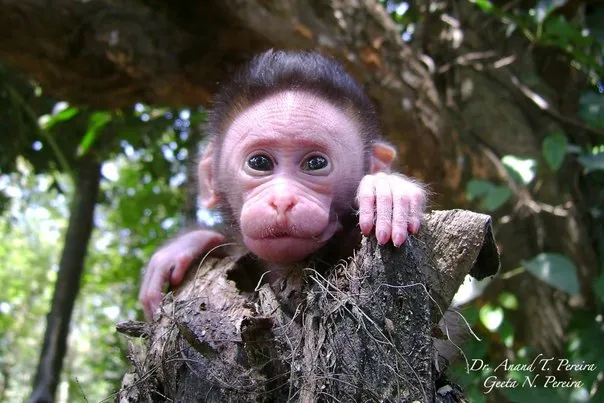
In the Indian context, Coffee Plantations are largely cultivated inside forests and for centuries this mutually beneficial coexistence has existed.
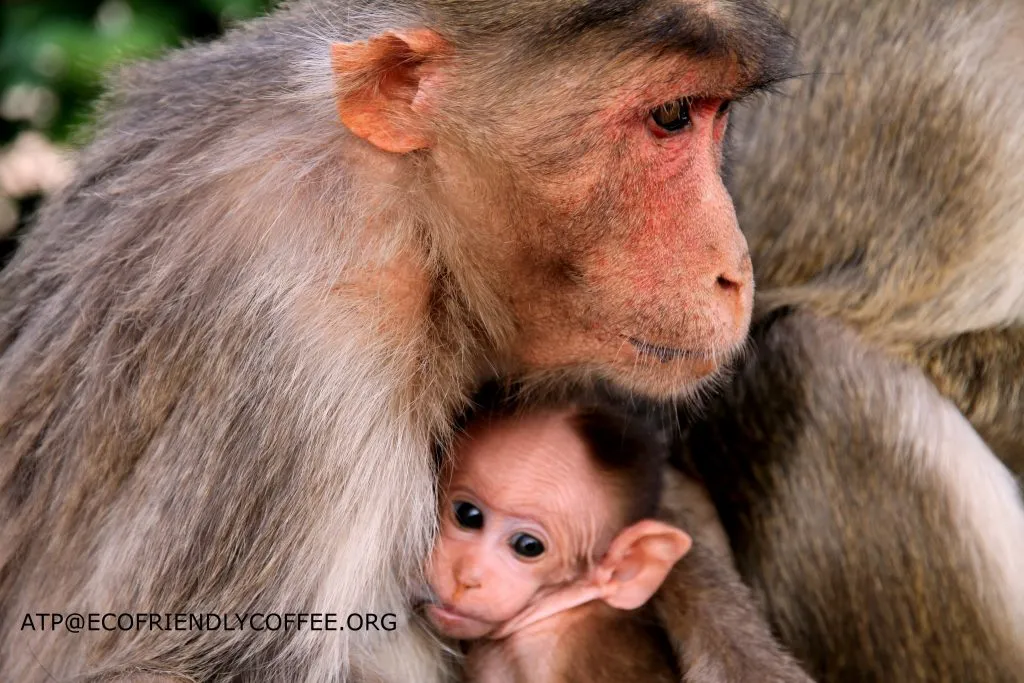
The passage of time has clearly revealed a harmonious relationship among all biotic partners which primarily includes all forms of wild life. It is not as simple as it sounds.
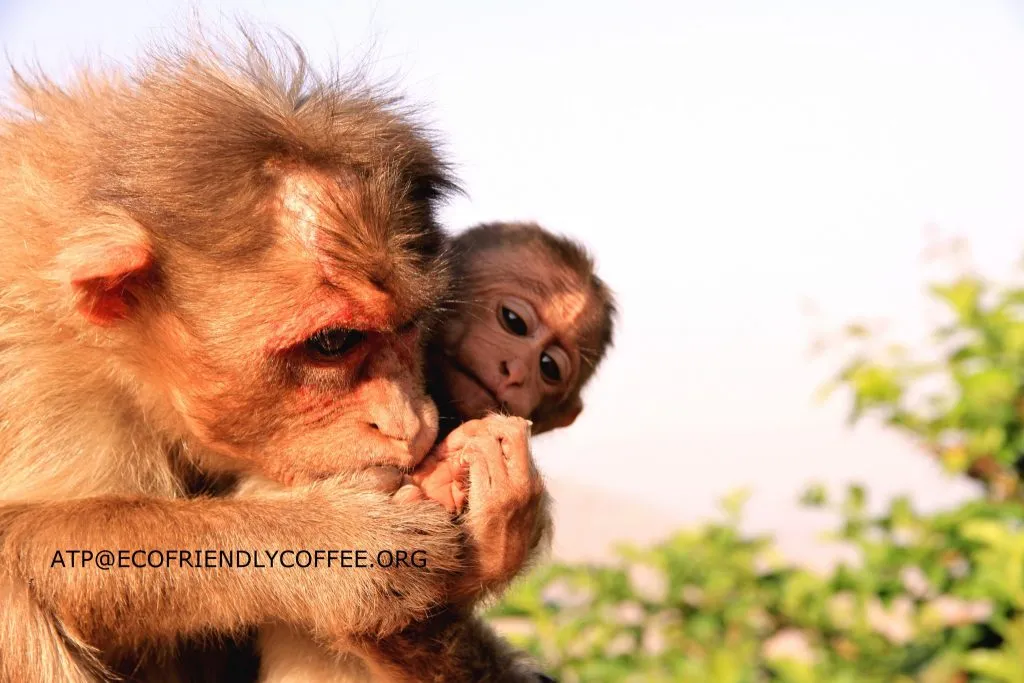
When you look at each and every component that makes the coffee forest vibrant, it reveals a very multifaceted ecosystem.

The ecological relationships are very complex and the biological diversity is amazingly rich. Delicate patterns emerge from the canopy of trees as well as from the floor of the coffee forest.
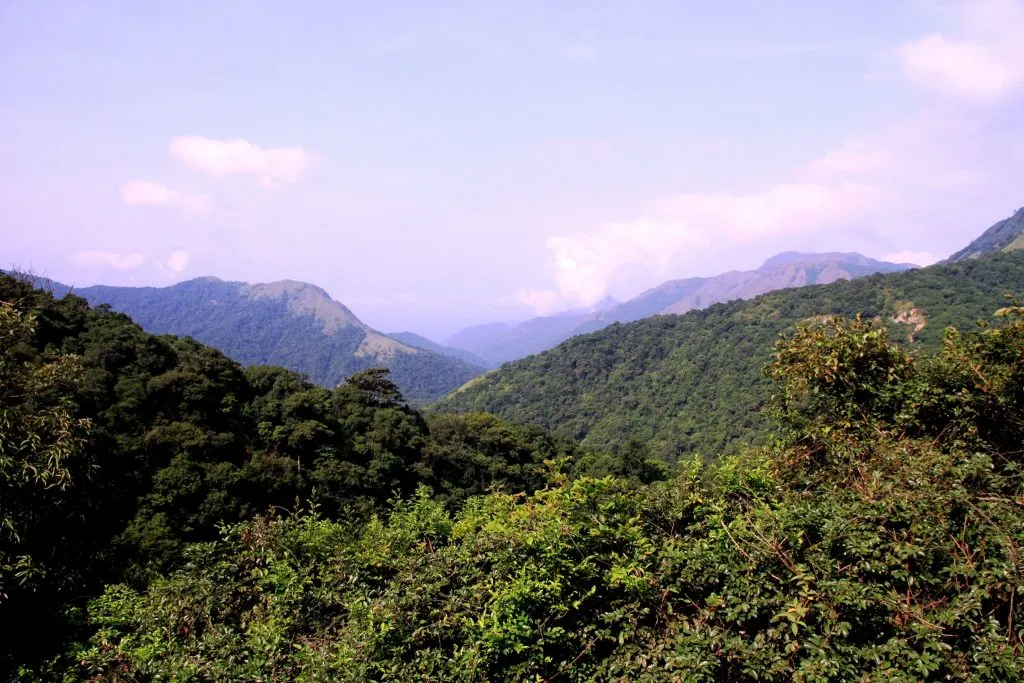
This essentially constitutes the subtle balance among life’s processes. This article defines a part of the complex interdependence of coffee with different species of Monkeys.
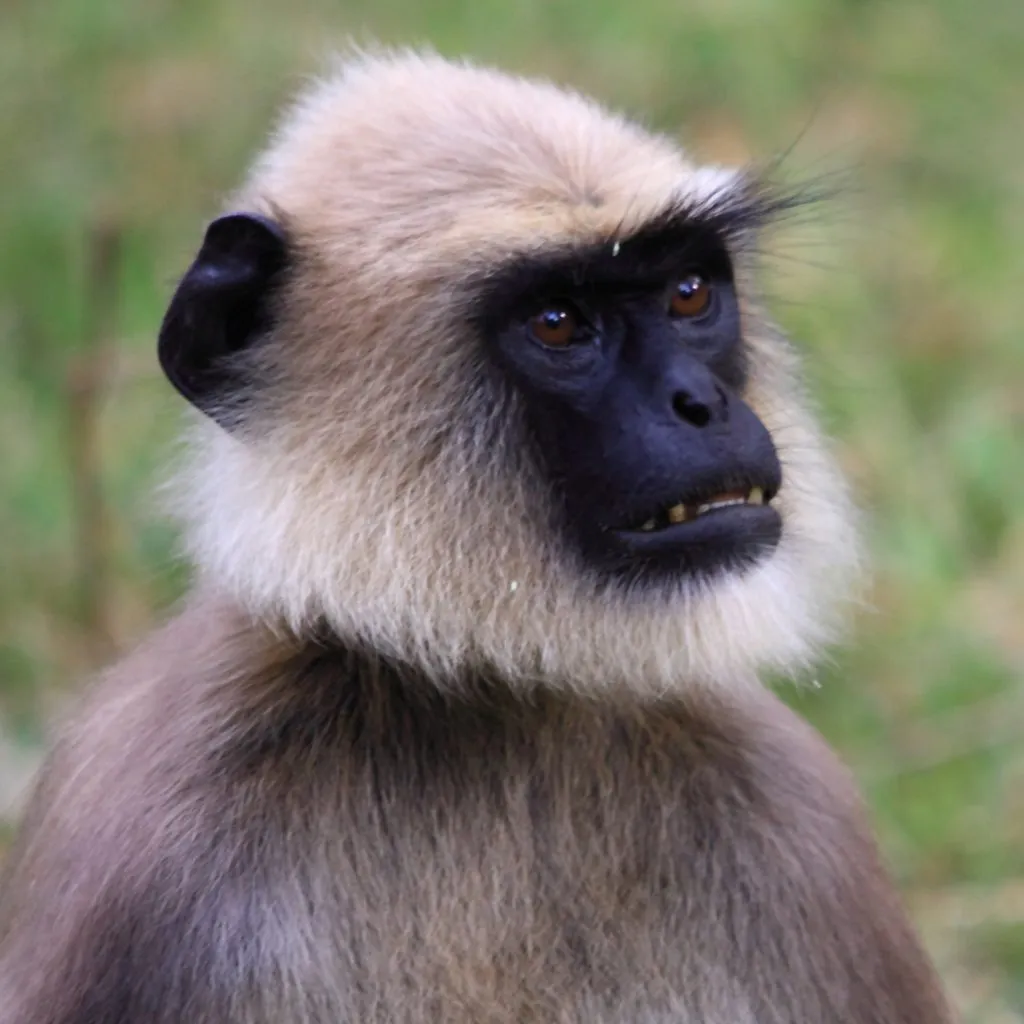
The coffee forest provides a wide range of diversity. Each region is unique and depending on the State and region, each place provides selective ecological niche areas for biodiversity to flourish. In all, Coffee forests provide home to a large family of monkey species.
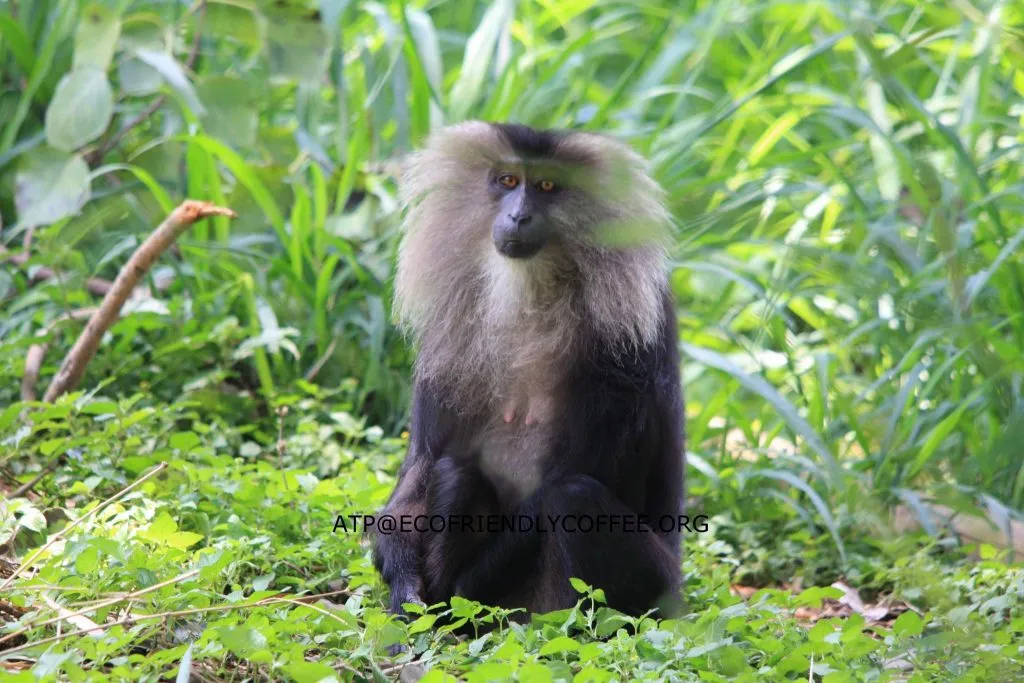
Monkeys are members of the primate groups and are divided into Old World monkeys and New World monkeys; The New World primates (South and Central America) and the old world primates (Asia and Africa). The major difference is that the old world primates make use of their tail for balancing and support.
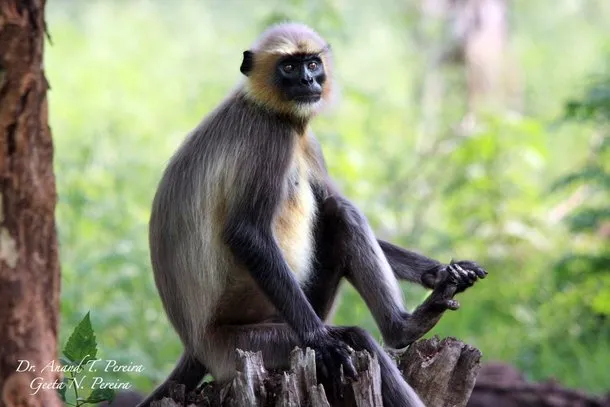
They have a wide range of adaptation and can be found in tropical or subtropical regions. Almost all species are diurnal in nature.
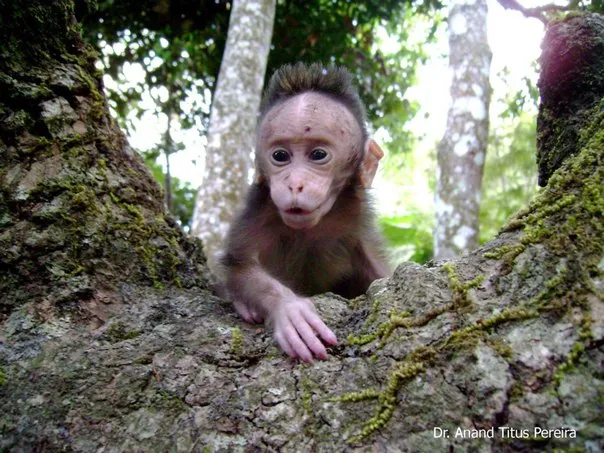
Most monkeys are arboreal. They can sit upright and stand erect. They are gifted with a long tail and are medium in size.
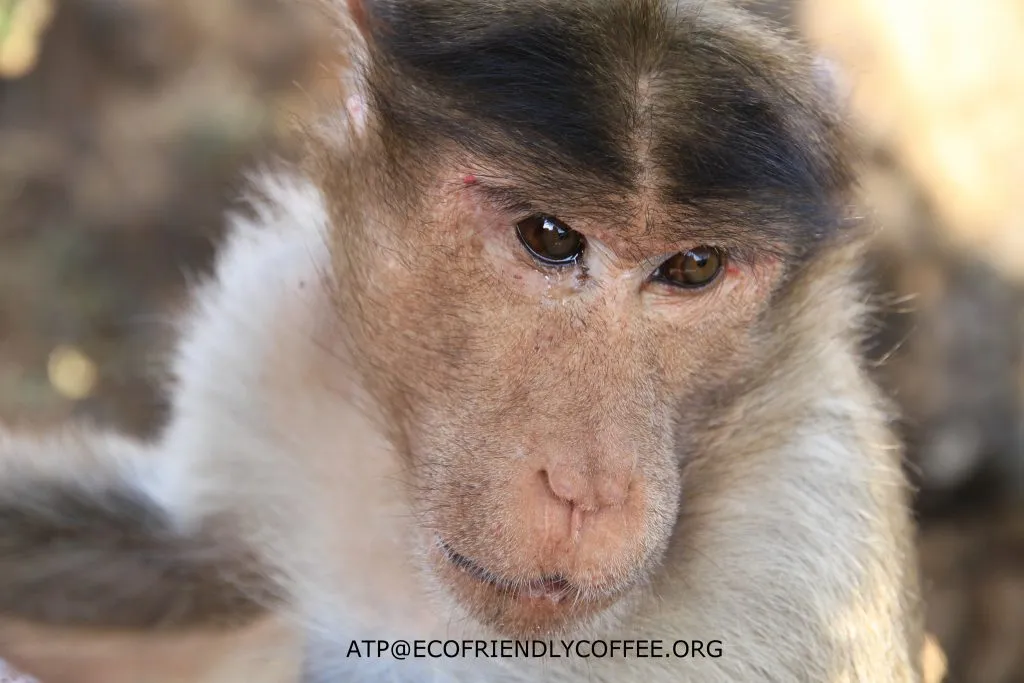
When one thinks about monkeys, one needs to know that there are more than 264 species of monkeys found in the world today. They are derived from early primates that have been around for thousands of years.

The primate order also includes macaques, baboons, guenons, capuchins, marmosets, and tamarins. Apes and chimpanzees are not scientifically classified as monkeys, a common misconception due to their physical similarities.

We have observed different species of primates inside Ecofriendly shade coffee forests.

The rhesus monkey is one of the most prominent species of Old World monkeys and distributed in large population across the country. Rhesus Macaques is native to Asia and has a wide geographic range in India. It is known to occupy a wide geographical range inside shade coffee forests.
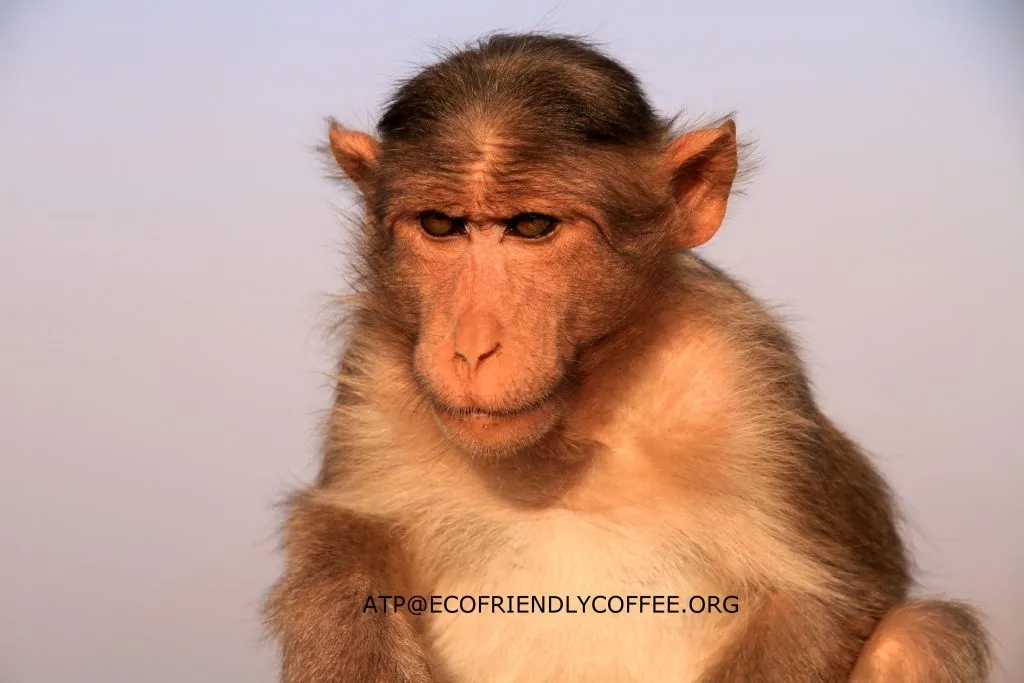
At times one can also observe Bonnet Macaque which is endemic to South India.
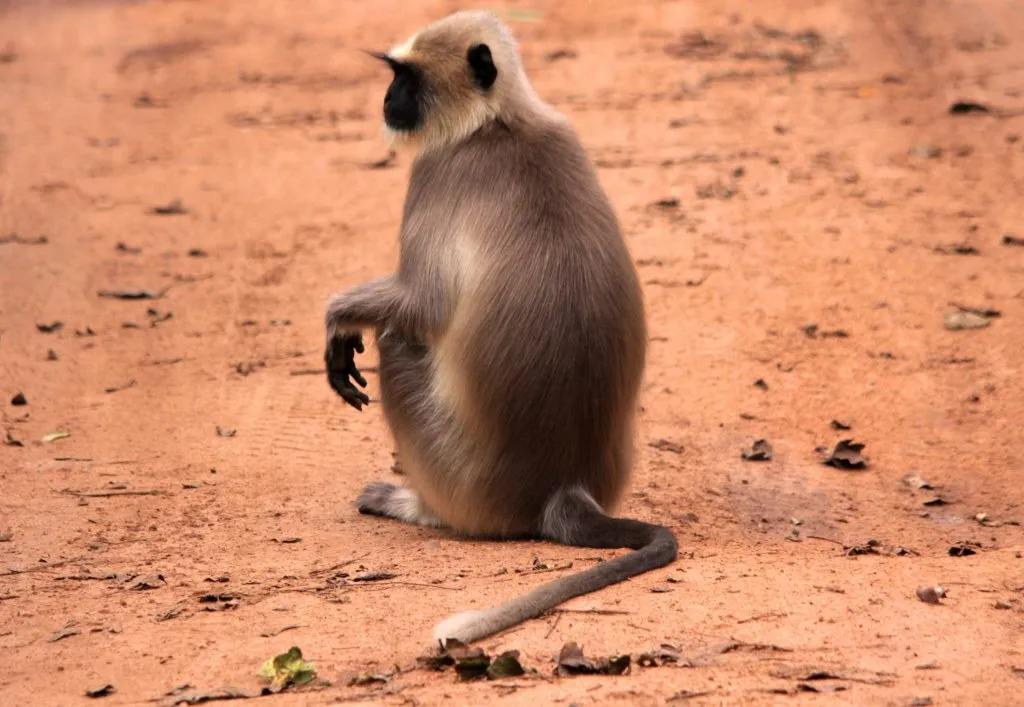
The habitats include evergreen coffee forest and dry deciduous forest of the Western Ghats Mountains and some of the Eastern Ghats ranges as well. Bonnet monkey have a greyish brown back and a well defined circular cap along with long tail, two-thirds of its the length.
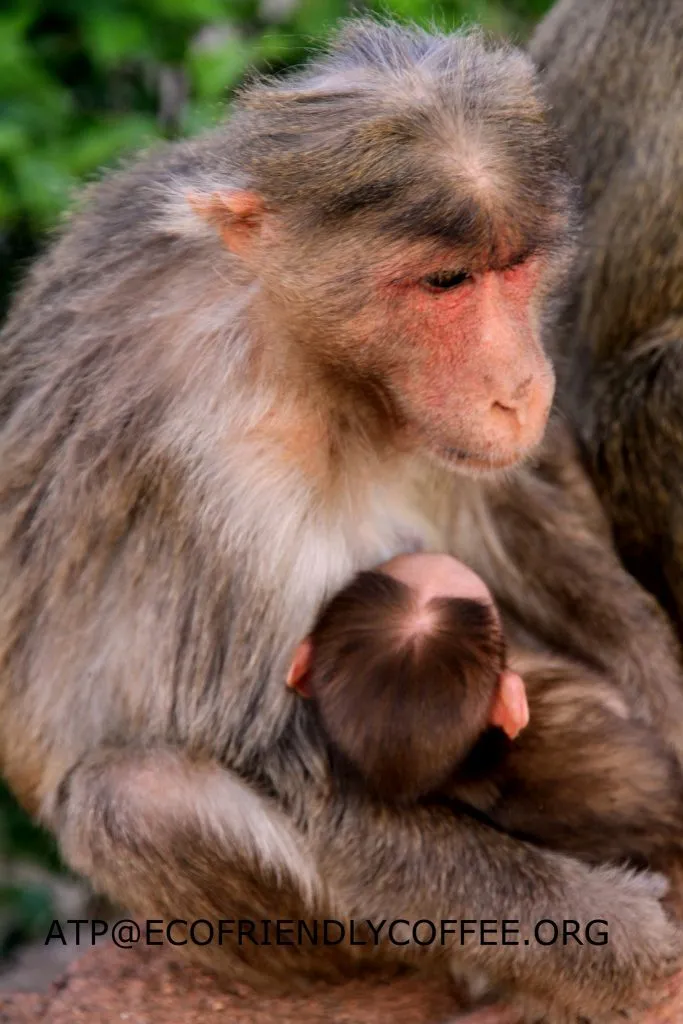
By nature, all species of monkeys are highly adaptable creatures and make their homes in the tall evergreen canopy of trees which offer permanent shade to coffee.
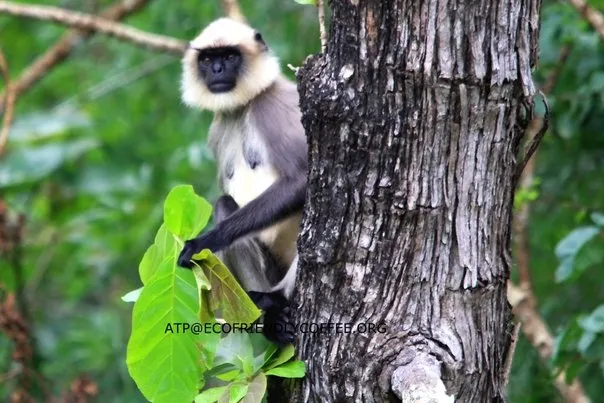
Adaptation
The Coffee environment provides an ideal habitat for monkeys to thrive. Monkeys are highly adaptable creatures and easily fine-tune to any challenging environment.
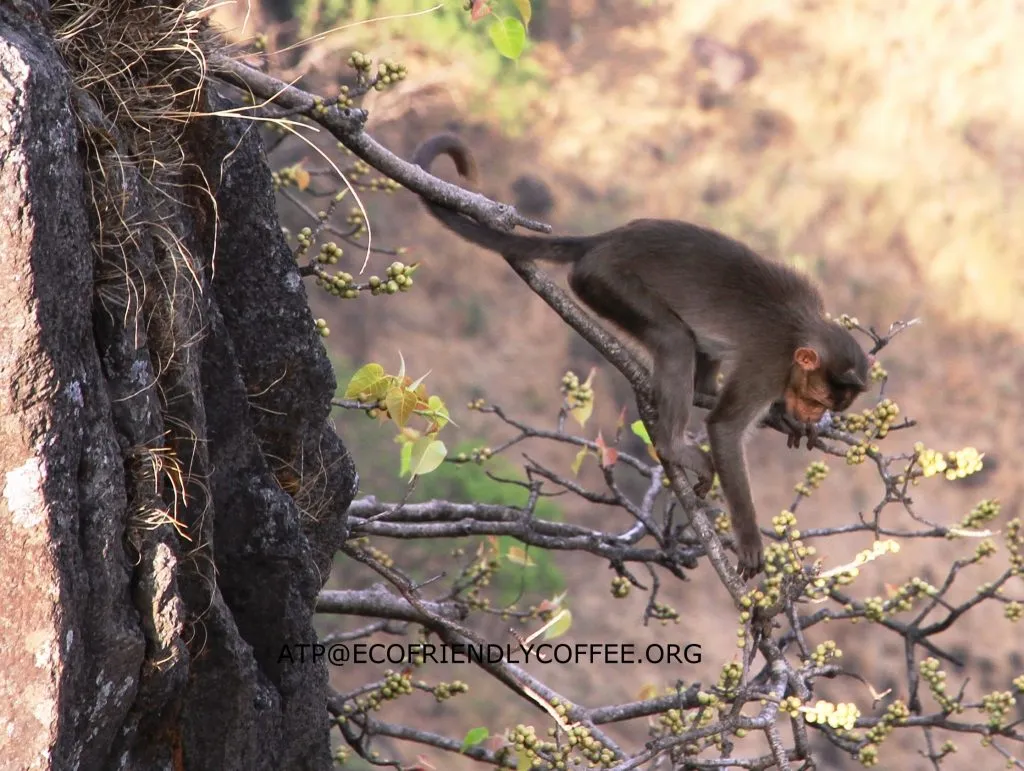
The availability of wild and introduced fruits all season round provides an abundant supply of food. Even though monkeys love the environs of the coffee forest, they often face the threat of competition because some other groups share the same habitat and eat the same food.
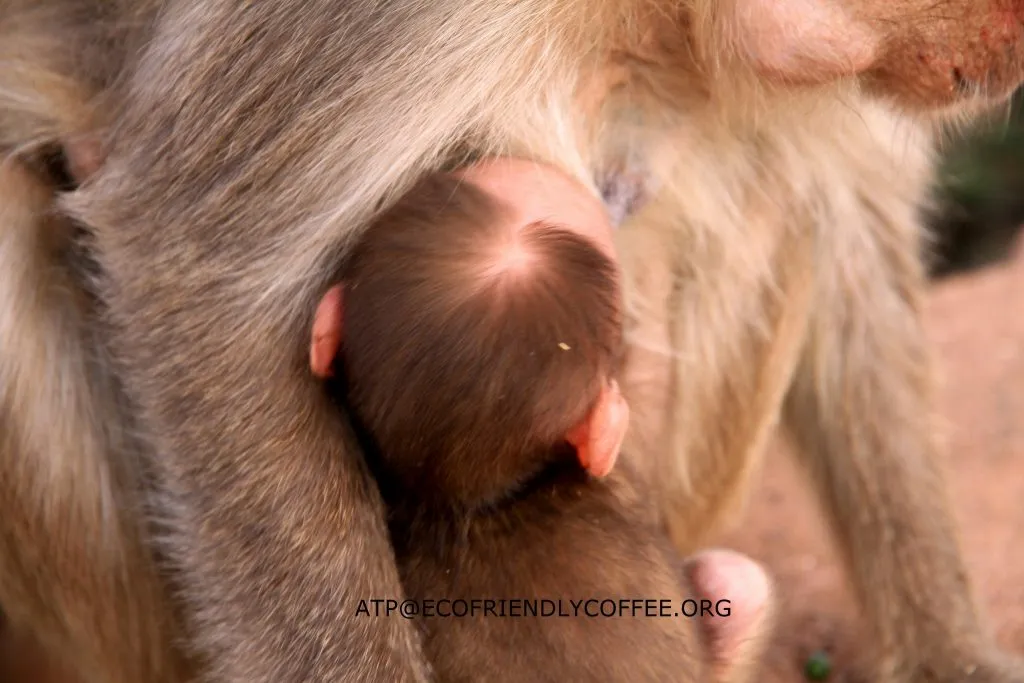
Social Behaviour

Research clearly points out that monkeys are very social and love each other’s company. Generally the Female of the group acts as the head. Scientists also believe that the off spring may inherit the social standing of the mothers.
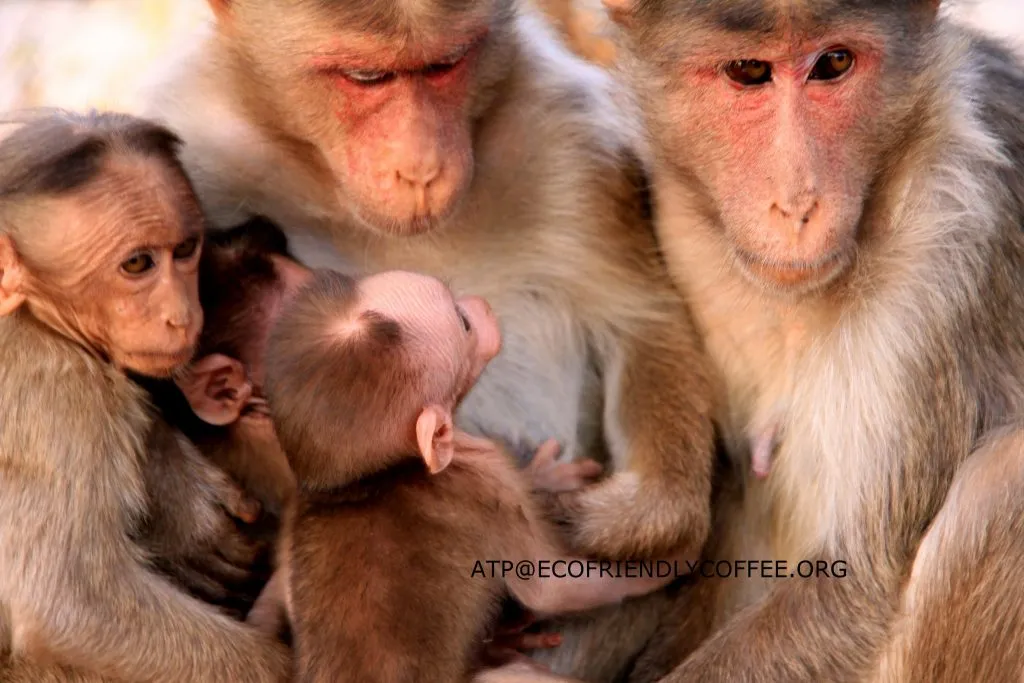
Communication
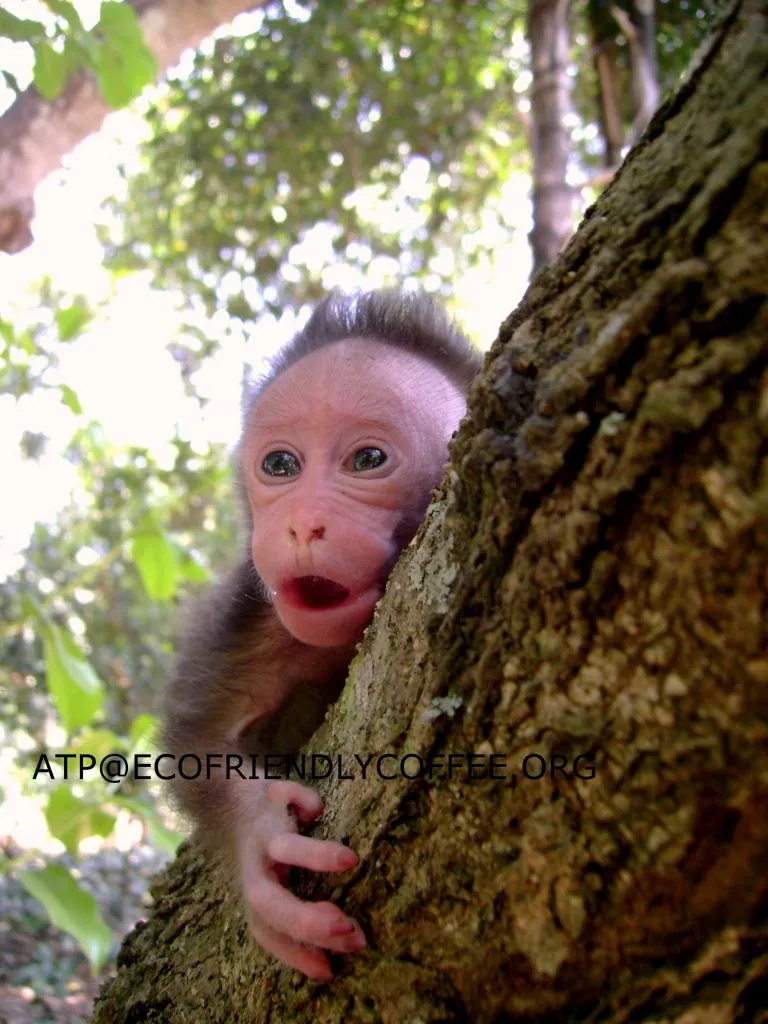
Effective communication is a key factor in the survival of the species. Communication skills can vary from one group to the other. We have commonly observed shrill whistles as a means of communication. Generally a sentry is posted when the other members of the group are on a hunt or feeding.
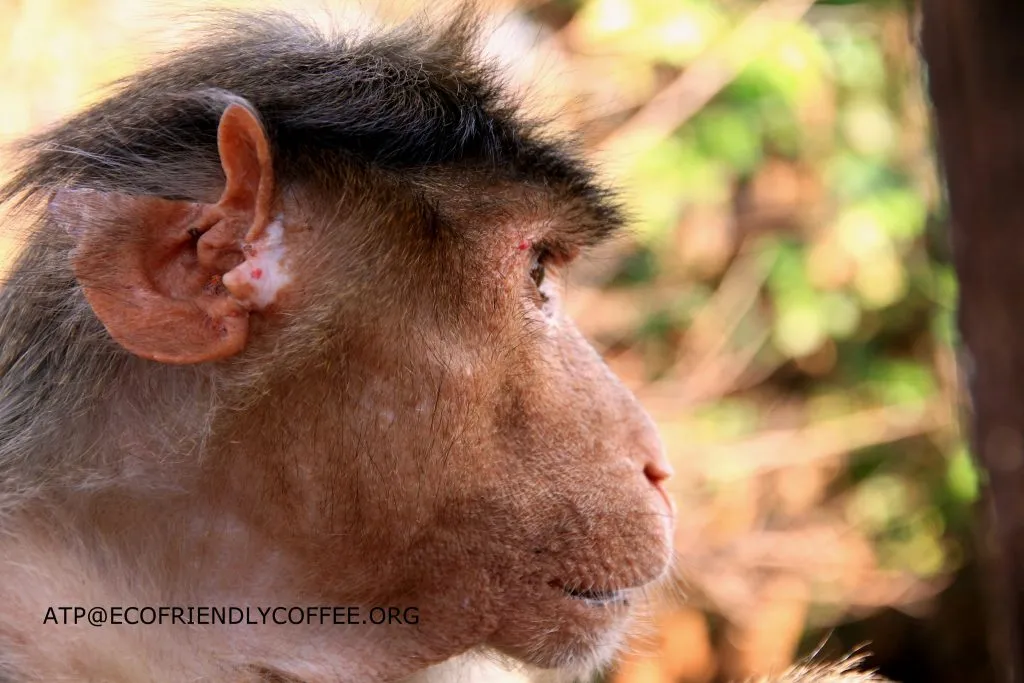
Breeding
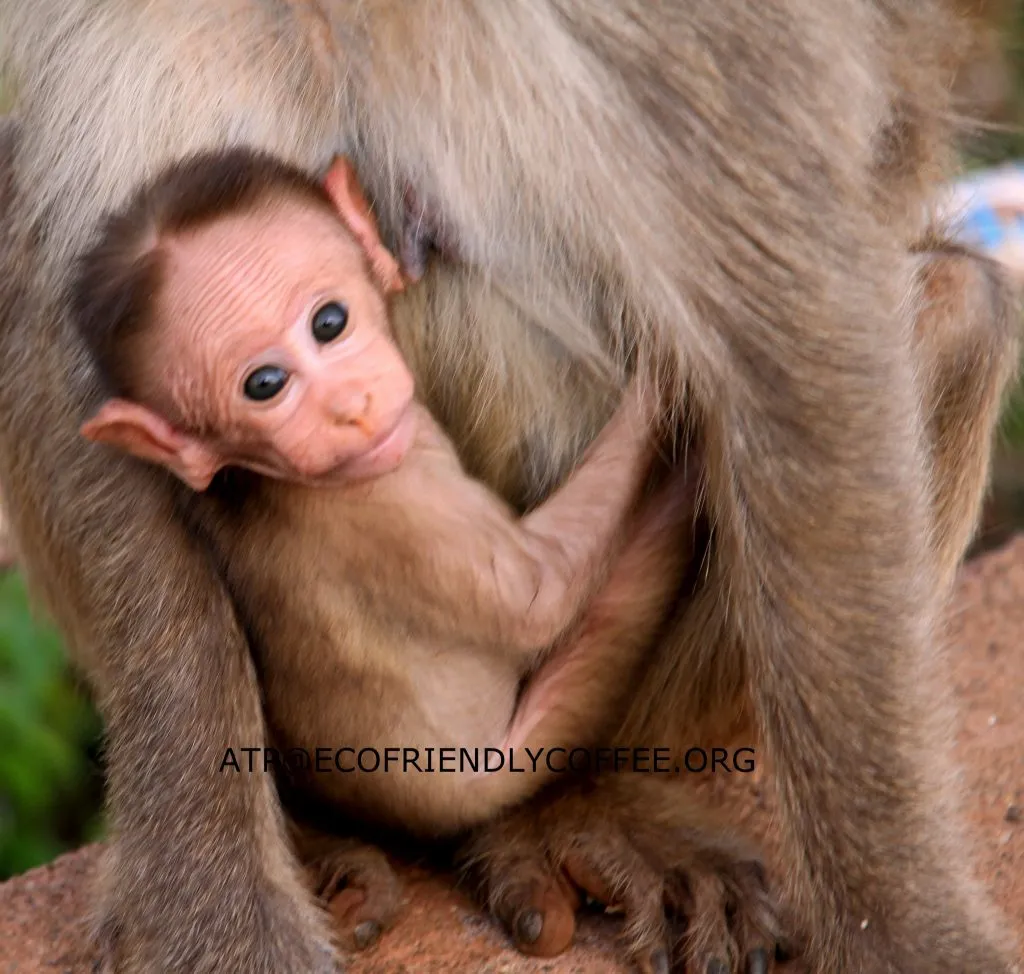
Breeding Inside coffee zones breeding coincides with the plentiful availability of food. However, breeding can also take place at any time of the year. Generally one new born is observed with most of the species. In times of drought or scarcity of food, they stop breeding.
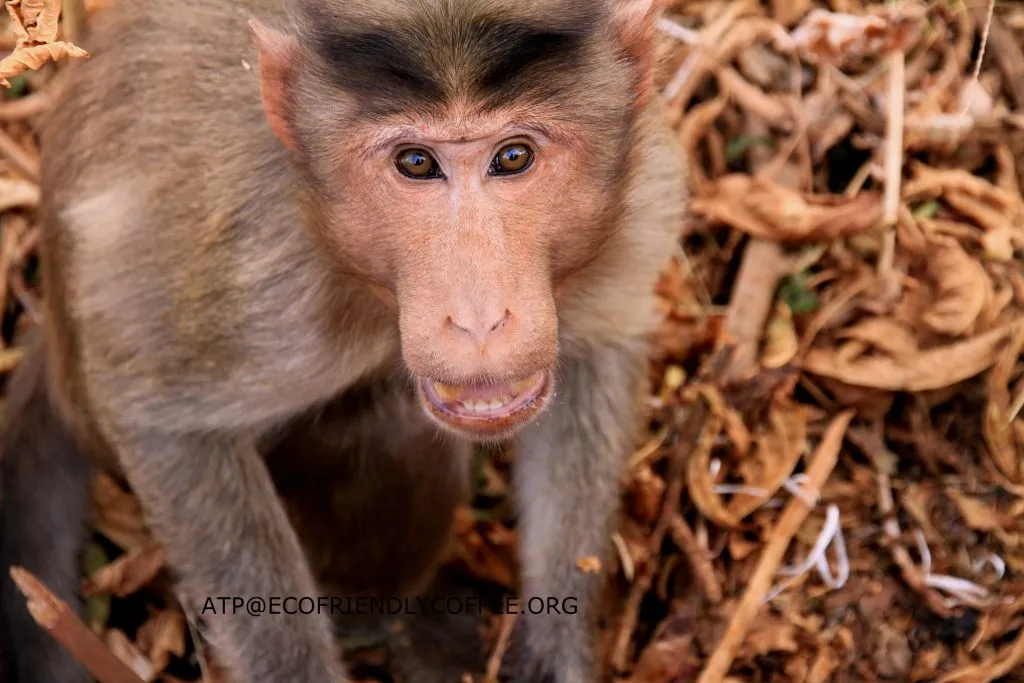
Caring for the Young
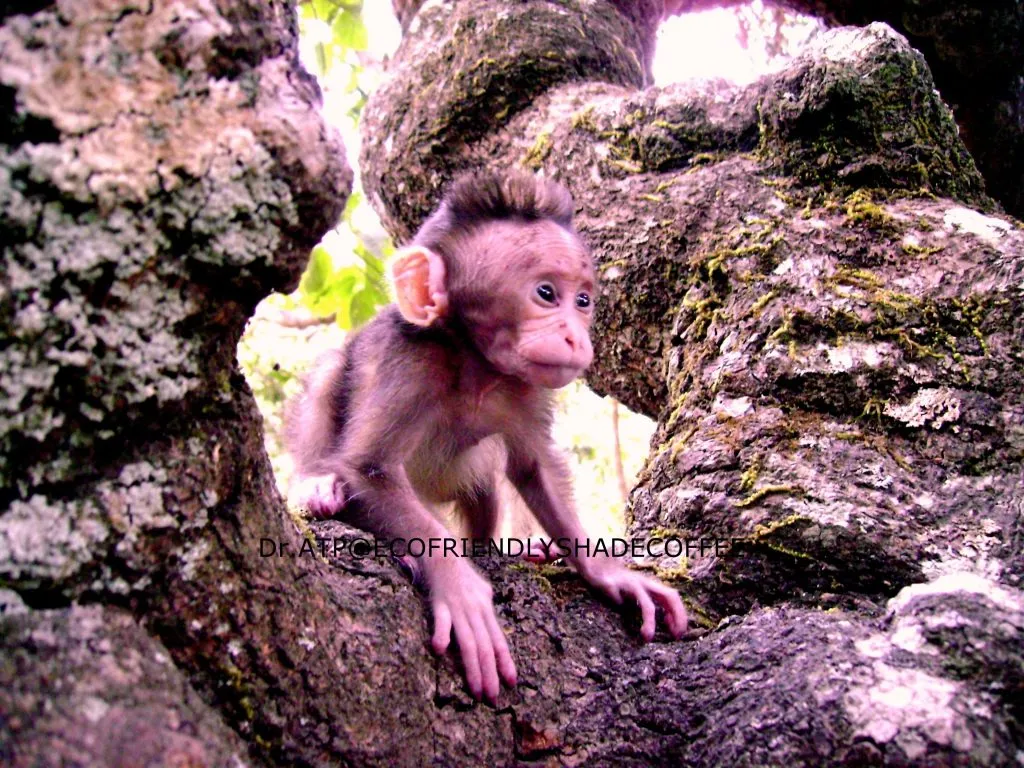
The adults spend quality time in grooming the young. They nurture them and also lecture them when they are disobedient. Depending on the species they will either stay in the group for life or they will leave when they reach the age of maturity.
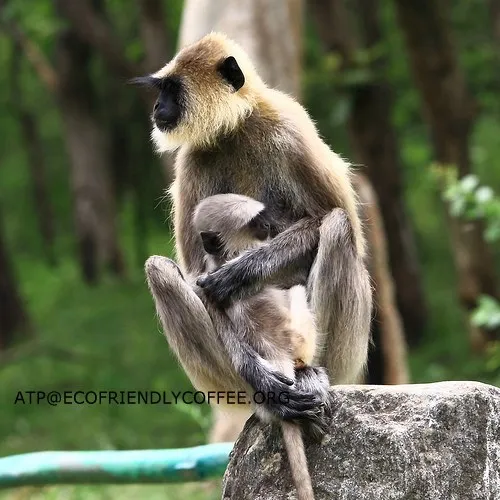
Use of Tools
The most common tools used are sticks to bring out termites from tree cavities and pointed or round stones to crack open nuts.
Why are monkeys a threat to Coffee Farms

Monkeys inside coffee farms constitute a number of groups and each group can house up to 25 to 40 monkeys. During harvest time, just imagine a group of 40 to 70 monkeys just clipping away the branches of coffee laden with ripe cherries, eating a few and spitting out the rest. It causes heavy losses to Coffee farmers because the monkeys have their strength in numbers.

Monkeys are in the habit of cutting and chewing young coffee seedlings and plants in the age group of one to two years. This provides a setback in the development of a healthy coffee bush.
Solution
We have found an ingenious solution to this menace. We suspend dry fish on the lower branches of newly established plantations, during the rainy season. It is believed that monkeys stay far away from the smell of dry fish.
Predators
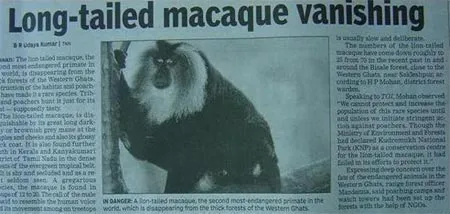
We have not observed any predators. The greatest threat comes from human beings.
Conservation
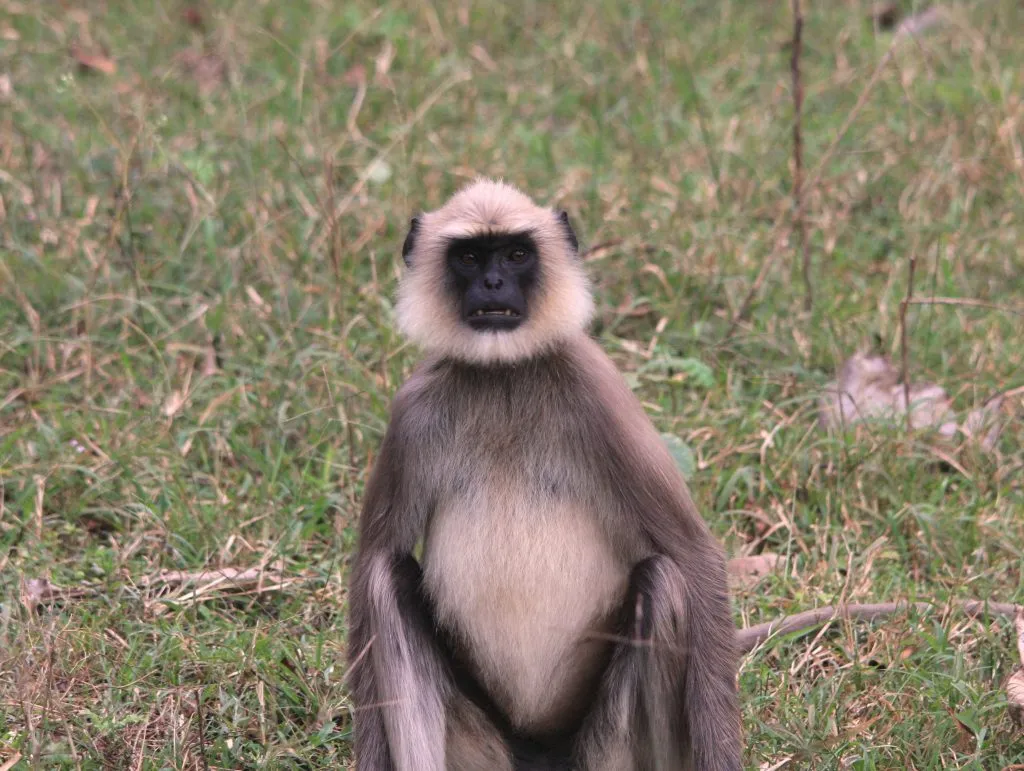
A few species of monkeys are under direct threat from habitat loss. Impact of global warming Logging and accelerated deforestation is also a key factor in the distribution , reproduction & decline of various monkey species.
Monkey Classification:
Kingdom: Animalia
Phylum: Chordata
Class: Mammalia
Order: Primates
Suborder: Haplorrhini
Lifespan : 10 to 50 years, depending on species.
Number of Young: 1 or 2

Gestation: 4 to 8 months, depending on species
Age of maturity: 18 months to a few years depending on species.
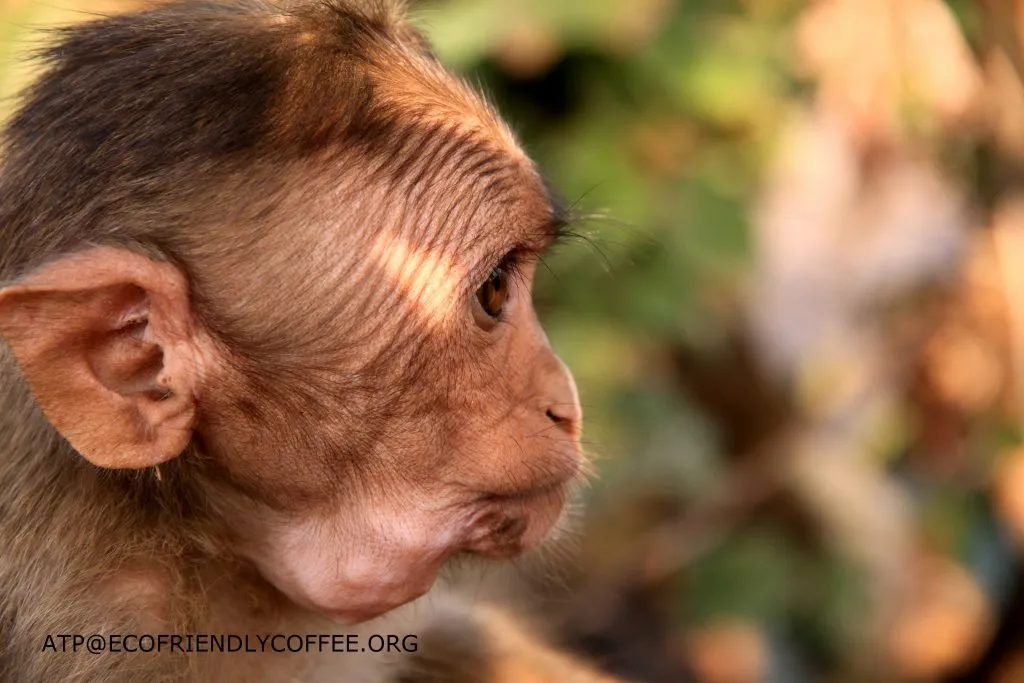
Size: Two to two and a half feet.
Weight: 5 kg – 20 kg.

Conclusion
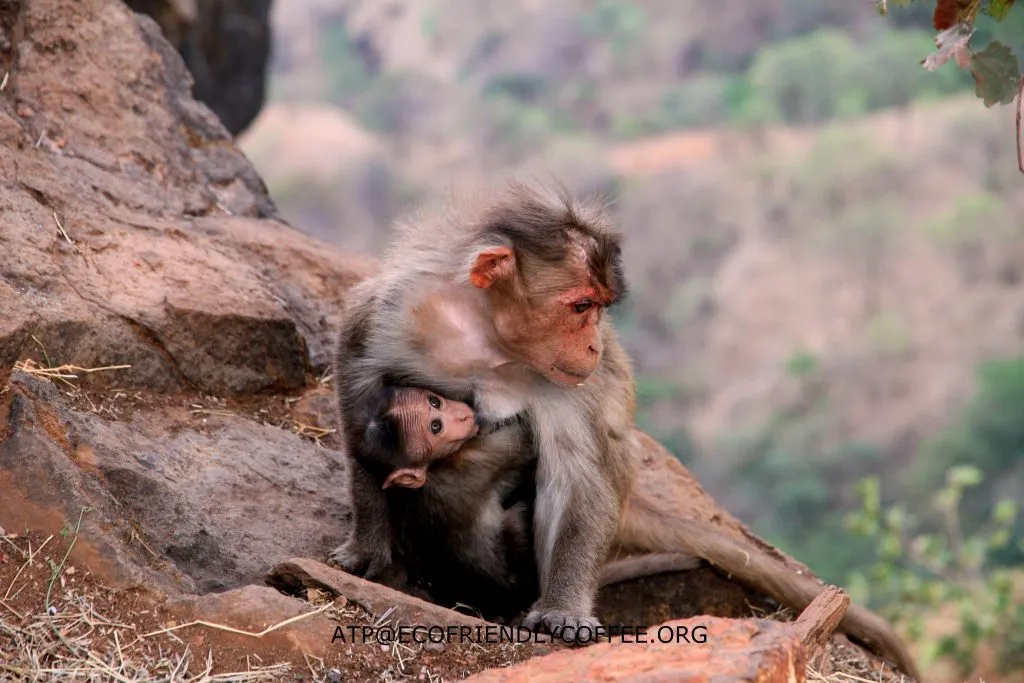
All forms of life, in their almost unbounded variety, are inter- related. If the equilibrium between life and nature and the sense of balance among all living things are upset, the order of life is in danger of dying out.

Coffee has always maintained a symbiotic relationship with the surrounding biotic community.

Our greatest need today is for careful and rational field work on all types of flora and fauna in their natural coffee environment. We need to exploit monkey chewed coffee beans as a speciality coffee both in the domestic as well as International market.

References
Anand T Pereira and Geeta N Pereira. 2009. Shade Grown Ecofriendly Indian Coffee. Volume – 0ne.
http://ecofriendlycoffee.org/monkey-chewed-coffee-beans/
http://ecofriendlycoffee.org/toddy-cat-coffee-beans/
http://animals.sandiegozoo.org/animals/monkey
http://www.livescience.com/topics/monkey/
http://www.monkeyworlds.com/monkey-information/
http://www.monkeyworlds.com/monkey-social-structure/